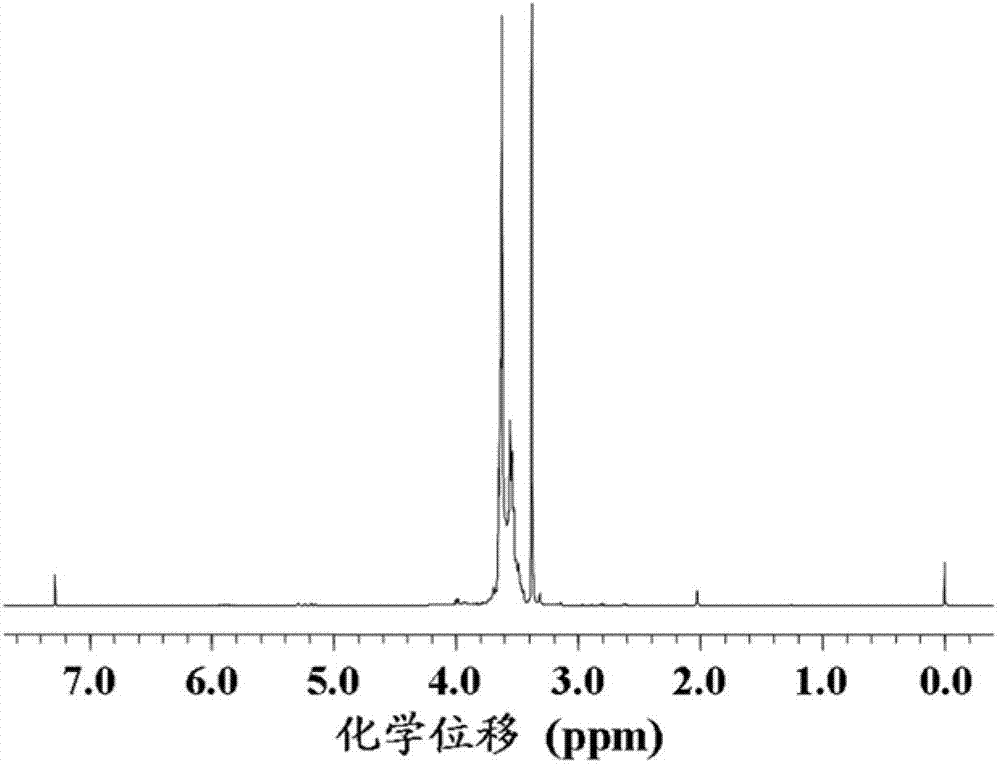Polyether random copolymer and preparation method thereof
A technology of random copolymers and polyethers, applied in the field of polymers, can solve the problems of no modifiable side groups, limited applications, and can not provide hydrophobic groups, etc., and achieves high use value and good cell targeting. The effect of stability and wide application prospects
- Summary
- Abstract
- Description
- Claims
- Application Information
AI Technical Summary
Problems solved by technology
Method used
Image
Examples
preparation example Construction
[0052] The present invention provides a preparation method of the polyether random copolymer described in the above technical scheme, which comprises the following steps:
[0053] Polymerizing the anionic initiator, the first polymerization monomer and the second polymerization monomer in an anhydrous solvent to obtain a polyether random copolymer;
[0054] The anionic initiator is prepared according to the following method:
[0055] Under an inert gas atmosphere, reacting a fused-ring aromatic hydrocarbon with a benzene ring number of 1 to 5 and an alkali metal in an anhydrous solvent to obtain the first reaction product;
[0056] Reacting the first reaction product with an alcohol compound having 1 to 10 carbon atoms to obtain an anionic initiator;
[0057] The first polymerized monomer and the second polymerized monomer are selected from ethylene oxide, propylene oxide, butylene oxide, 2-isopropoxyethylene oxide, 2-(3-allyl Oxy) ethylene oxide, 2-phenoxy ethylene oxide, 2-benzyloxy ...
Embodiment 1
[0072] Under a dry inert gas atmosphere, add 5 g (0.039 mol) of naphthalene, 1.52 g (0.039 mol) of potassium and 100 mL of anhydrous tetrahydrofuran to a clean and dry reaction flask, and after reacting at 15°C for 5 hours, add 3-allyl alcohol 2.26g (0.039mol), reacted at 15°C for 24h to obtain an initiator solution.
Embodiment 2
[0074] Under a dry inert gas atmosphere, add 5 g (0.039 mol) of naphthalene, 1.52 g (0.039 mol) of potassium and 100 mL of anhydrous tetrahydrofuran to a clean and dry reaction flask, and after reacting at 25°C for 5 hours, add 3-allyl alcohol 2.26g (0.039mol), reacted at 25°C for 24h to obtain an initiator solution.
PUM
 Login to View More
Login to View More Abstract
Description
Claims
Application Information
 Login to View More
Login to View More - R&D
- Intellectual Property
- Life Sciences
- Materials
- Tech Scout
- Unparalleled Data Quality
- Higher Quality Content
- 60% Fewer Hallucinations
Browse by: Latest US Patents, China's latest patents, Technical Efficacy Thesaurus, Application Domain, Technology Topic, Popular Technical Reports.
© 2025 PatSnap. All rights reserved.Legal|Privacy policy|Modern Slavery Act Transparency Statement|Sitemap|About US| Contact US: help@patsnap.com



